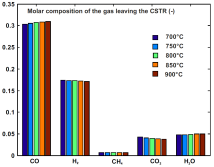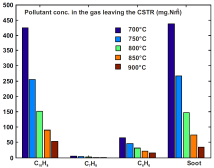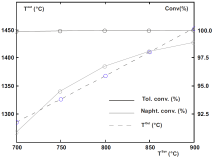Tar cracking and reaction pathway
This activity started in 2007 in the frame of the PhD Thesis of Alice Fourcault
(T5 Modelisation d'un étage haute température
alimenté par une troche à plasma pour la dégradation des goudrons présents
dans les gaz de synthèse) in partnership with Europlasma Company. It was
followed in the frame of the grant gained from the National Research Agency
(ANR BioE 2009 Turboplasma) still with Eurplasma company whare took place the PhD
thesis of Romain Demarthon (T8
Conception et modélisation d’un étage haute température pour la dégradation
thermique de goudrons).
In this first step of the more general work deveoted to the design of a reactor
for thermal tar cracking with plasma, the goal was: 1) define model compounds
that could represent the different class of tars produces during a cross flow
gasification and 2) to sketch a reaction pahtway able to describe their
degradation as a function of the gas temperature and composition.
In order to reduce the comlexity associated with the important number of
molecules contained in the tars, 4 model compounds have been chosen in order to
represent the different classes of the tars:
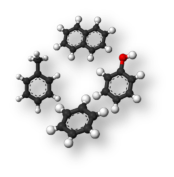
- Naphtalene as a model compound for class 4
- Toluene as a model compound for class 3
- Phenol as a model compound for class 2
- Benzene as an intermedaiate for degradation
According to this first choice and to data available in the literature a first reaction pahtway has been drawn by Alice Fourcault and allowed describing tar cracking.
First reaction pathway proposed by A. Fourcault.
(Figure from R. Demarthon PhD Thesis (2013).
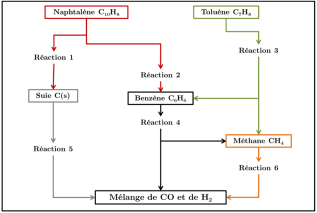
This first model was also completed with chemical reactions that were accounting for potential oxydation (that migt be fed to the reactor)or steam reforming since water vapor might be present in the gas leaving the gasifier, gas that could also contain methane, carbon monoxide and dioxide, soot...
This first model was enhanced in order to include phenol and its reactions and to include soot formation from methane cracking. Also, acetylene was also included in the model
Second reaction pathway proposed by R. Demarthon.
(Figure from R. Demarthon PhD Thesis(2013).
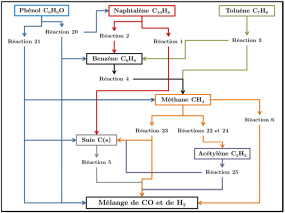
In order to qualify the behavior of both models, tests were carried out with an infinite volume. They were in accordance with the ones obtained from equilibrium assumption. The influence of the operating parameters was also investigated.
Results from the first model.
Composition of the gas at the input and at the output of the
reactor.
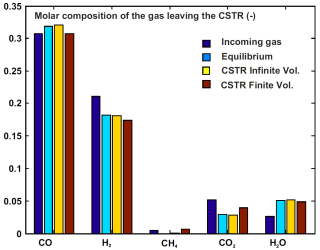
Results from the first model.
Influence of the temperature of the incoming gas on :
the molar fraction of the main compounds (left),
the pollutant concentrations (center) and the temperature of the
output gas(right). Conversion of naphtalene and toluene (right)
